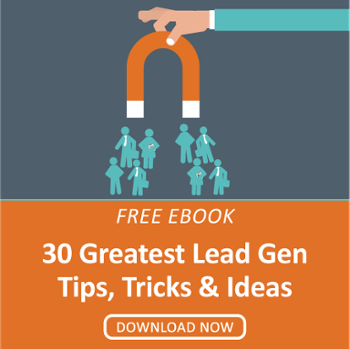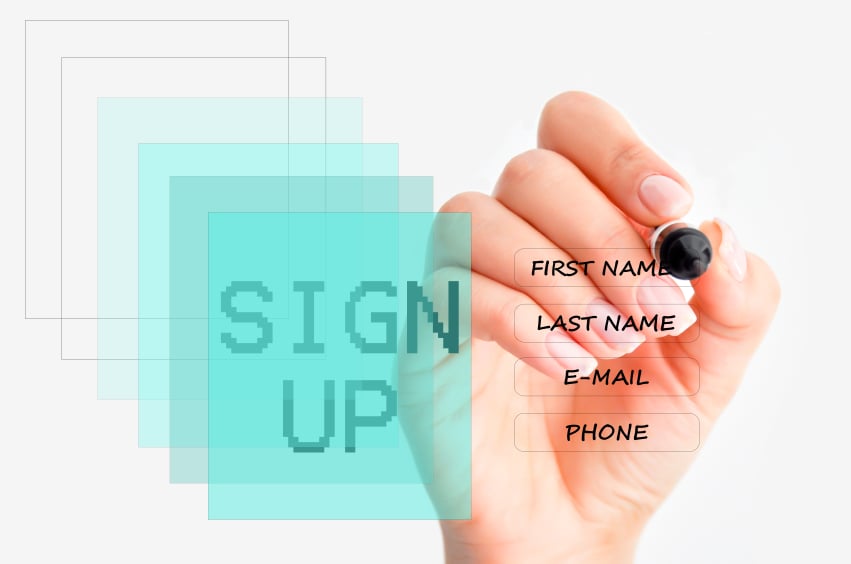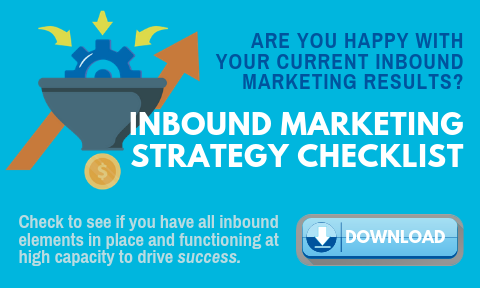Premium content is worth its weight in gold when you’re trying to attract lifelong customers with your inbound marketing strategy. The best kind of premium content is the type that offers visitors answers they need—something that they’re willing to give their email address and other information to get. However, that slick eBook your team spent months putting together is only half of the equation. The other half is designing a great landing page for that premium content.
Having a landing page that’s designed to convert can make all the difference in whether they’re willing to give you their contact information to learn more. On that note, there is a basic framework to follow if you want to make the most effective landing page possible and build trust with your website visitors and future leads.
For Landing Page Best Practices, Consider the 5 W’s and H
 In the distant past, I created plenty of landing pages on request from my marketing managers that didn’t perform well, partly because they didn’t have a well-established purpose. Although some of these included some of my cleverest writing, the KPIs for the landing page were dismal at best.
In the distant past, I created plenty of landing pages on request from my marketing managers that didn’t perform well, partly because they didn’t have a well-established purpose. Although some of these included some of my cleverest writing, the KPIs for the landing page were dismal at best.
To avoid the same outcome, here are five questions you should ask yourself when creating any landing page. It follows the traditional 5 W’s and H model, with a slight twist—instead of asking “when,” you’ll be asking “what” twice to ensure you can engage your leads.
Who is this landing page targeting?
The obvious answer here is your prospects. But, what if your business has multiple different buyer personas it caters to? That could play into the language you use in the copy, the fields on your form, and any other number of factors on the landing page itself.
What is being offered?
No matter who you’re targeting, your landing page should be as descriptive and clear as possible with what you’re offering. Be direct and truthful about what you’re getting—don’t try to make your premium content sound like it’s too good to be true so they’ll fill out the form. Offering your lead the equivalent of a button they can press to quadruple their sales overnight sounds enticing, but you’ll set your leads up to not trust you or want to do business with you in the future.
What’s in it for them?
Describe the benefits your premium content piece will offer the website visitor, ideally as close to the top of the page as possible. Putting the benefits of the page below two paragraphs of summary on the eBook is all but a guarantee they won’t read what you wrote and will likely leave the page without submitting anything. In journalism, they call this burying the lede.
Conversely, if you show the benefits of your gated content up front, they’ll know exactly what they’re getting and be more willing to fill out any information you need from them.
Why do they need it now?
Creating a sense of urgency can ensure that your visitors complete the download the first time they visit the page, rather than coming back to it later—or more likely, forgetting about it altogether. One way to do this is by presenting your premium content as a limited-time offer.
For example, if you’re hosting a live webinar, one way to create urgency is to only offer a limited number of “seats” or have a deadline for them to reserve their spot. You might even include a counter that shows how many spaces or days remain. This way, they’ll know exactly what they’re signing up for and why it’s so important that they sign up immediately.
How do they get the premium content?
This is another aspect where providing clarity is your safest bet. Explain on the page how you’ll provide them the offer. For example, if you’re offering them an eBook, a whitepaper or another downloadable file, let them know if you’ll be sending it to them as an email. If the form will redirect them directly to your eBook or to a page where they can download it, tell them that. If you’re offering a free consultation, make it clear when someone will be in touch with them.
The common thread with all these questions is clarity. Be forthcoming about what you’re offering, since that’s the first chance you have to establish trust with your future leads and customers.
Best Practices for Forms
In terms of lead conversions, the form is where the magic happens. However, much like the content you’re offering, not all forms are created equal. Some are more valuable than others. Cloning your form without changing anything—or worse, using the same form for every single offer you have—won’t consistently help you reach the right person at the right time.
For example, suppose you’ve got a Top of the Funnel offer, like a checklist or an infographic. In this case, you might only ask for their first and last name and their email address. However, as your lead goes further down the funnel, you’ll be able to ask for more information, like their company name and title, among other things.
As a rule of thumb, the more information you ask for on a form, the less likely your visitor is to submit it. Think of submitting a form as a commitment on their end—you wouldn’t start picking out wedding cake flavors on your first date. However, the more you nurture your lead and guide them down the funnel, the more likely they are to commit to giving that information.
Other Landing Page Best Practices to Consider
Once you’ve gone through the basics of creating your landing page, you’ll want to add in a few other features that we recommend.
Include Images
Feature an image on your landing page that represents what you’re offering. For whitepapers, eBooks or case studies, this can be as simple as a screenshot of the cover. For more involved pieces of premium content like webinars, provide a portrait and brief bio for your presenters so the visitor can learn more about their experience.
Disable top navigation
If your website is a city full of streets and highways, you want your landing page to be a one-way road straight to your content. Eliminate any easy opportunity for someone to leave your landing page until they’ve submitted the form. Most web hosting services allow you to use landing page templates without top or bottom navigation so you can accomplish this.
Eliminate all other calls-to-action
Similarly to disabling navigation on your landing page, you want to create as few distractions as possible. Don’t have any other calls-to-action on the page aside from those that lead them to the form. Filling out the form when they’re ready to do so should be their only option on the page itself.
However, if you have a thank-you page for them to visit after they submit the form, that’s the ideal place to put other calls-to-action so they can learn more about your resources.
Landing pages are an essential part of the inbound methodology and help you convert visitors into leads. Needless to say, it’s important to make sure you provide your visitors with a compelling reason to convert. Every piece of premium content you create must have a landing page that leaves your visitors eager to fill out the form and get their copy, so keep these best practices in mind for every piece you create.
Editor's Note: This blog has been completely updated and optimized from original publish date.
.png)







Leave a Comment